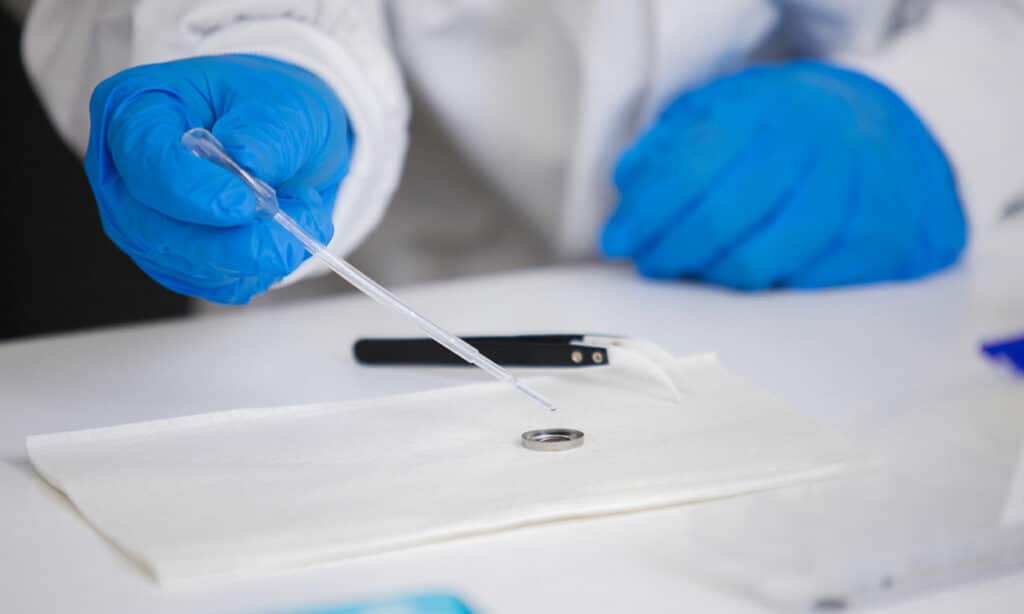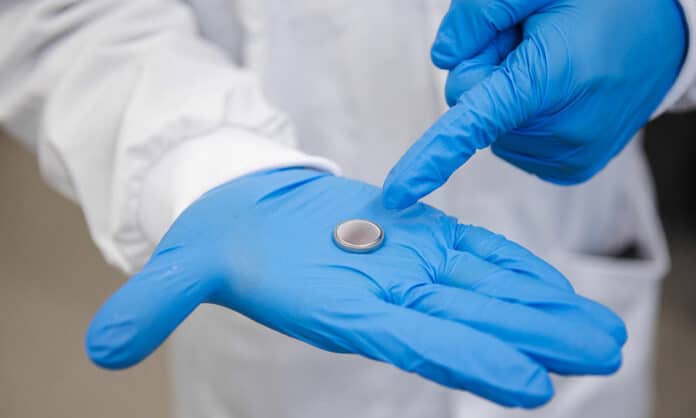Lithium-ion energy storage is currently dominating the market, but it has certain limitations when it comes to large-scale grid energy storage due to safety concerns.
An international team of researchers and industry collaborators, led by RMIT University, has recently invented recyclable ‘water batteries’ that are safe and won’t catch fire or explode. This breakthrough innovation is a significant step forward in the field of aqueous energy storage devices and can significantly improve the technology’s performance and lifespan.
This new battery uses water instead of organic electrolytes, which makes the battery much safer as it can’t catch fire or explode like traditional lithium-ion batteries. According to lead researcher Distinguished Professor Tianyi Ma, their batteries can be safely disassembled, and the materials can be reused or recycled, which addresses end-of-life disposal challenges that consumers, industry, and governments globally face with current energy storage technology.
The use of materials such as magnesium and zinc that are abundant in nature, inexpensive, and less toxic than alternatives used in other kinds of batteries helps lower manufacturing costs and reduces risks to human health and the environment. The simplicity of manufacturing processes for their water batteries has also made mass production feasible.
Researchers created small-scale trial batteries for peer-reviewed studies to overcome various technological challenges, such as increasing energy storage capacity and lifespan. In their most recent study, they were able to tackle the problem of dendrites, which are spiky metallic formations that can lead to short circuits and other serious faults. They used a protective layer of bismuth and its oxide to coat the affected battery parts and prevent dendrite formation.
“Our batteries now last significantly longer – comparable to the commercial lithium-ion batteries in the market – making them ideal for high-speed and intensive use in real-world applications,” Ma said. “With impressive capacity and extended lifespan, we’ve not only advanced battery technology but also successfully integrated our design with solar panels, showcasing efficient and stable renewable energy storage.”

The team’s water battery is closing the gap with lithium-ion technology in terms of energy density, with the aim of using as little space per unit of power as possible. They claim to have made a magnesium-ion water battery that has an energy density of 75 watt-hours per kilogram (Wh kg-1) – up to 30% that of the latest Tesla car batteries.
The next step for water batteries is to develop new nanomaterials for electrode materials that can increase their energy density. According to Ma, magnesium looks like the most promising material for future water batteries. He believes that magnesium-ion water batteries could replace lead-acid batteries in the short term, within the next one to three years, and even potentially replace lithium-ion batteries in the long term, in the next 5 to 10 years.
The advantages of using magnesium as the electrode material are that it is lighter than other metals like zinc and nickel has a higher potential energy density and can enable faster charging times and better support for power-hungry devices and applications.
Ma said that the batteries developed by the team are well-suited for large-scale applications, which makes them an ideal choice for grid storage and renewable energy integration. Additionally, their batteries are considered safe for use, which is a crucial factor for such applications.
As technology continues to advance, it is possible that these batteries could be used for smaller-scale energy storage applications, such as powering homes and entertainment devices.
Journal reference:
- Xiaomeng Tian, Qin Zhao, Mengmeng Zhou, Xinjun Huang, Ying Sun, Xiaoguang Duan, Lei Zhang, Hui Li, Dawei Su, Baohua Jia, Tianyi Ma. Synergy of Dendrites-Impeded Atomic Clusters Dissociation and Side Reactions Suppressed Inert Interface Protection for Ultrastable Zn Anode. Advanced Materials, 2024; DOI: 10.1002/adma.202400237
- Mudi Li, Yaxi Ding, Siwen Zhang, Ying Sun, Minghui Liu, Jianwei Zhao, Bosi Yin, Tianyi Ma. Interface Polarization Effects Enhancing Mn2O3@TiO2@MXene Heterostructures for Aqueous Magnesium Ion Capacitors: Guided Charge Distribution and Transportation via Built-in Electric Fields. Small Structures, 2023; DOI: 10.1002/sstr.202300371
